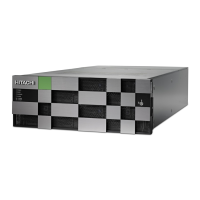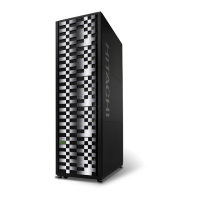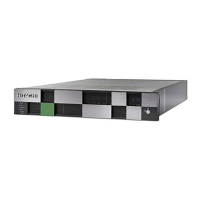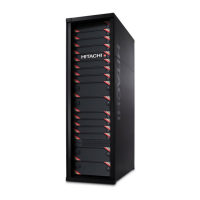Do you have a question about the Hitachi VSP N400 and is the answer not in the manual?
Identifies target readers for the document, including representatives, administrators, and customers.
Explains typographic conventions, icons, and formatting used throughout the manual.
Guides users on how to find and access product documentation online via the Hitachi Vantara Support Website.
Describes storage system configuration for block-level access using protocols like FC and iSCSI.
Details a configuration combining NAS modules with block-level setup via iSCSI or FC.
Provides specifications, interfaces, and drive tray details for the VSP N400 storage system.
Provides specifications, interfaces, and drive tray details for the VSP N600 storage system.
Lists key features and capabilities of the VSP N400 and VSP N600, including memory, drives, and capacity.
Details the CBLM controller, including its functional LEDs and power supply status.
Explains the status indicators on the CBLM controller's front panel when the bezel is removed.
Describes the LEDs and connectors located on the rear panel of the CBLM controller.
Discusses the front-end modules, including their ports and LEDs for system management.
Presents physical specifications and details for the small form-factor drive trays.
Details the physical specifications and components of large form-factor drive trays.
Provides physical specifications and component details for the flash module drive tray.
Provides guidelines on proper storage of the system to prevent battery damage.
Outlines the procedure for safely powering down the storage system.
Discusses battery lifetime, treatment, and replacement considerations for system reliability.
Details the physical dimensions of various drive types supported by the system.
Lists the data capacities for different drive types used in the storage system.
Describes interface types, data transfer speeds, port counts, and RAID specifications.
Lists the types of cables required for storage system installation and connections.
Details specifications for Fibre Channel cables, including lengths and types for various speeds.
Provides guidelines for organizing and protecting cables for integrity and airflow.
Identifies target readers for the document, including representatives, administrators, and customers.
Explains typographic conventions, icons, and formatting used throughout the manual.
Guides users on how to find and access product documentation online via the Hitachi Vantara Support Website.
Describes storage system configuration for block-level access using protocols like FC and iSCSI.
Details a configuration combining NAS modules with block-level setup via iSCSI or FC.
Provides specifications, interfaces, and drive tray details for the VSP N400 storage system.
Provides specifications, interfaces, and drive tray details for the VSP N600 storage system.
Lists key features and capabilities of the VSP N400 and VSP N600, including memory, drives, and capacity.
Details the CBLM controller, including its functional LEDs and power supply status.
Explains the status indicators on the CBLM controller's front panel when the bezel is removed.
Describes the LEDs and connectors located on the rear panel of the CBLM controller.
Discusses the front-end modules, including their ports and LEDs for system management.
Presents physical specifications and details for the small form-factor drive trays.
Details the physical specifications and components of large form-factor drive trays.
Provides physical specifications and component details for the flash module drive tray.
Provides guidelines on proper storage of the system to prevent battery damage.
Outlines the procedure for safely powering down the storage system.
Discusses battery lifetime, treatment, and replacement considerations for system reliability.
Details the physical dimensions of various drive types supported by the system.
Lists the data capacities for different drive types used in the storage system.
Describes interface types, data transfer speeds, port counts, and RAID specifications.
Lists the types of cables required for storage system installation and connections.
Details specifications for Fibre Channel cables, including lengths and types for various speeds.
Provides guidelines for organizing and protecting cables for integrity and airflow.
| Model | VSP N400 |
|---|---|
| Management Software | Hitachi Storage Advisor, Hitachi Command Suite |
| Drive Types Supported | SSD, HDD |
| RAID Levels Supported | RAID 1, RAID 5, RAID 6, RAID 10 |
| Controller Type | Active-active |
| Interface | Fibre Channel, iSCSI |
| Data Reduction Features | Deduplication, Compression |
| Maximum Cache | Up to 1 TB |
| High Availability Features | Redundant components |
| Power Supply | Redundant |
| Operating Temperature | 10 to 35°C (50 to 95°F) |











